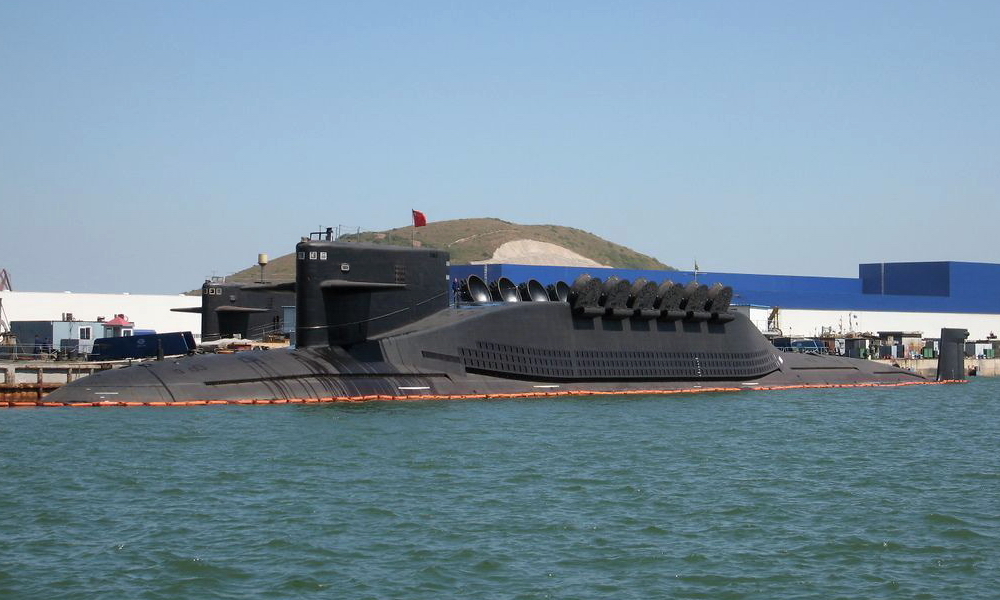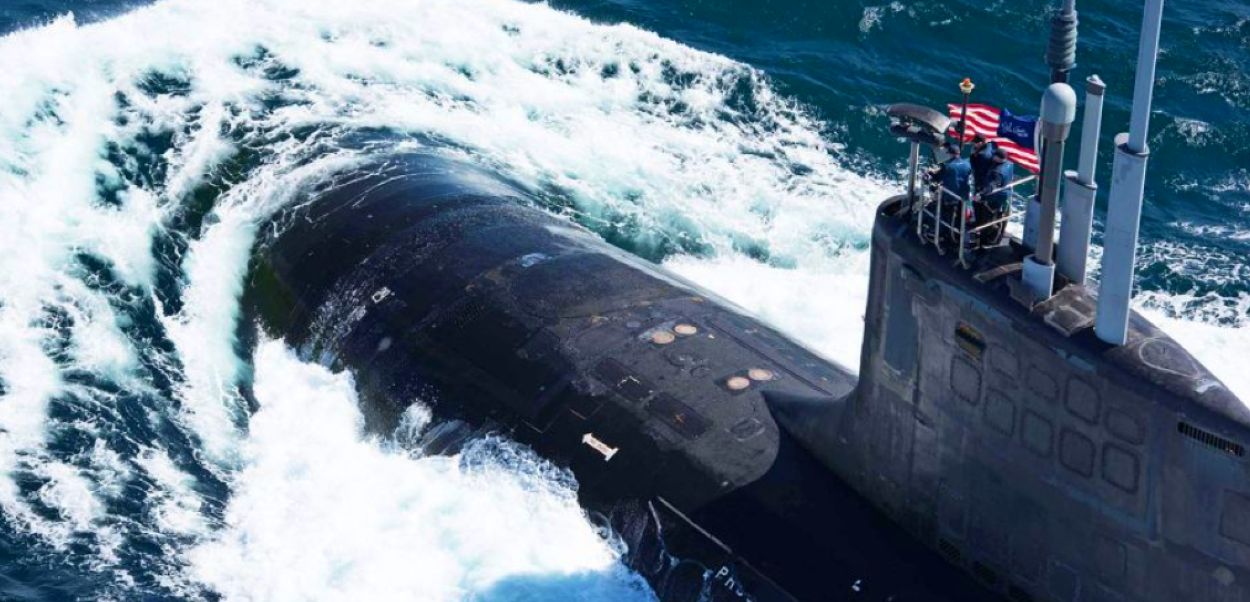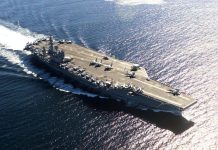The United States is strengthening its nuclear capability by working on sea-based nuclear cruise missiles. The move comes amid mounting tensions with adversaries like China and Russia.
The US currently maintains a nuclear triad comprising land-based intercontinental ballistic missiles, air-launched cruise missiles, and sea-based weapons. As the Pentagon prepares for a potential nuclear showdown in the future amid rising tensions with Russia and China, it has decided to focus on bolstering its sea-based nuclear capability.
It is believed that the US ground-based and air-launched systems could become ineffective if opponents launch a first strike in a nuclear battle. The US wants to maintain deterrence with its adversaries through sea-based systems that are expected to provide a second-strike capability.
Testifying before the Senate Armed Services strategic forces subcommittee last week, Navy Vice Adm. Johnny R. Wolfe Jr., Director for Strategic Systems, said, “If you think about it from the adversary’s perspective, anything that they may think they could do as an initial strike, that [ballistic missile submarine] force is always out there on alert, on patrol, unknown where they’re at. Certainly, if ever called upon, they are survivable and could ensure that a second strike from our nation could be performed. That is critical as you look at deterrence and what it means.”
He was testifying along with Air Force Gen. Thomas A. Bussiere, Commander of Air Force Global Strike Command. He noted the significant advancement in the Navy’s efforts to modernize its part of the US nuclear triad and laid out some details about the new nuclear-launched cruise missile.
“We have built on this remarkable history of deterrence, marking such milestones as the final demonstration and shakedown operation for our Ohio-class ballistic missile submarines [and] establishment of a new nuclear office for the sea-launched cruise missile, SLCM-N (nuclear sea-launched cruise missile),” Wolfe said.
“Additionally, in coordination with our [National Nuclear Security Administration] partners, we are initiating a nuclear weapon project to adapt a nuclear warhead for this new capability,” he added.
As per the Vice Admiral, the planned SCLM-N would be fired from attack submarines and surface vessels, as opposed to usual ballistic missile submarines.
He informed the senators that rebuilding the industrial base that created the SLCM-N and has now downed shutters would be difficult. “Significant investments are required to build back capacity to handle multiple concurrent nuclear modernization programs,” he said.
Deterring The Nuke-Armed Enemies
Previous Congressional testimony by administration officials revealed that a nuclear-armed sea-launched cruise missile (SLCM-N) to counter the growing Russian and Chinese nuclear threat was being worked upon years after it was recommended by the Nuclear Posture Review of 2018.
The SLCM-N is not launched from ballistic missile submarines but from surface vessels or attack submarines (SSNs). During the Cold War, the US integrated these missiles into SSNs. They were eventually deactivated by 2010 and removed from service along with the majority of US tactical nuclear weapons.
The decision to ramp up nuke capability at sea comes as a counter to Russia and China’s growing nuclear stockpiles. Russia possesses nearly a thousand “tactical” nuclear weapons that are transportable by air, sea, and land. China continues to expand its inventory and is alleged to possess about 500 nuclear warheads. More importantly, these weapons are not bound by any major treaty obligations.
Currently, the only sea-based nuclear weapons in the United States are ballistic missiles launched from strategic submarines (SLBMs). China and Russia, on the other hand, have been concentrating on producing low-yield tactical nuclear weapons, which are meant to bolster conventional military operations and are regarded as being below the level of strategic nuclear weapons.
Earlier, a Pentagon report noted that China’s fleet of six ballistic missile submarines of the Jin-class was conducting “near-continuous” patrols out of Hainan Island into the South China Sea.
These nuke submarines were accompanied by very long-range missiles that could strike the heart of the United States. These subs are armed with JL-3 missiles capable of carrying nuclear warheads.

The United States would be introducing the SLCM-N as its first new nuclear weapon since the end of the Cold War, sending a strong message to potential enemies (and reassuring allies) that it is capable of responding to any nuclear use, limited or otherwise.
It would send a message to China and Russia that, even with their numerical superiority in regional nuclear weapons, there was no military or coercive benefit to use nuclear weapons against the US or its allies, given the extremely high dangers involved. This is where the ‘second-strike’ capability of the Vice Admiral comes in.
According to the Vice Admiral, nuclear modernization will need investments in infrastructure, human capital, and the US industrial base. Most important, it will take time. “It is only through your continued support that the department’s highest modernization priorities can be achieved, and the Navy can deliver a reliable sea-based strategic deterrent capability,” he said.
However, the process is not going to be a cakewalk. When asked how the Virginia-class attack submarines will be modified to install nuclear-armed sea-launched cruise missiles and how much the changeover would cost, Wolfe said, “We’ve started to look at that” and “We’ve asked for flexibility.” He added, “It would be premature to give a cost estimate of the modification.”

Sen. Mark Kelly (D-Ariz.) questioned whether the change would mean “we would be giving up something we need” in the form of deterrent weapons like torpedoes against a larger navy. If the initiative proceeded, he also questioned how much it would cost other programs developing strategic weapons.
Wolfe stated that his office was “also supporting ongoing discussions between the administration and Congress on options to execute the SLCM-N program in a manner that balances risk to the Joint Force and the program of record, as well as cost and deterrence value.” He explained that to carry out the program, it would be necessary to balance the SLCM-N with ongoing Navy initiatives.
When confronted with two opponents that may possess nuclear weapons, ranking member Sen. Deb Fischer (R-Neb.) stated that “we have to have different options.”
To this, Wolfe stated at the hearing that “there is no one solution” for deterrence. “You have to be careful to separate” nuclear and conventional uses from an operational standpoint. “Nuclear modernization will take time,” Wolfe added, referring to weapon systems, platforms, and infrastructure.

The officer also talked about the transition from the Ohio to Columbia class of submarines.
“First and foremost, we must maintain the current [Trident II D5LE] (a submarine-launched ballistic missile, built by Lockheed Martin Space) missile inventory and provide the necessary operational support to sustain Ohio-class submarines through the end of their life in the early 2040s,” he said. “Secondly … we must continue to ensure a seamless transition between Ohio-class and Columbia-class submarines.”
Ohio-class SSBNs (the acronym stands for “Ship, Submersible, Ballistic, Nuclear,” but the SSBN is more commonly referred to as a ballistic missile submarine or fleet ballistic missile submarine), which were first deployed in the 1980s, are being replaced by ballistic missile submarines of the Columbia class.
- Contact the author at sakshi.tiwari9555 (at) gmail.com
- Follow EurAsian Times on Google News




